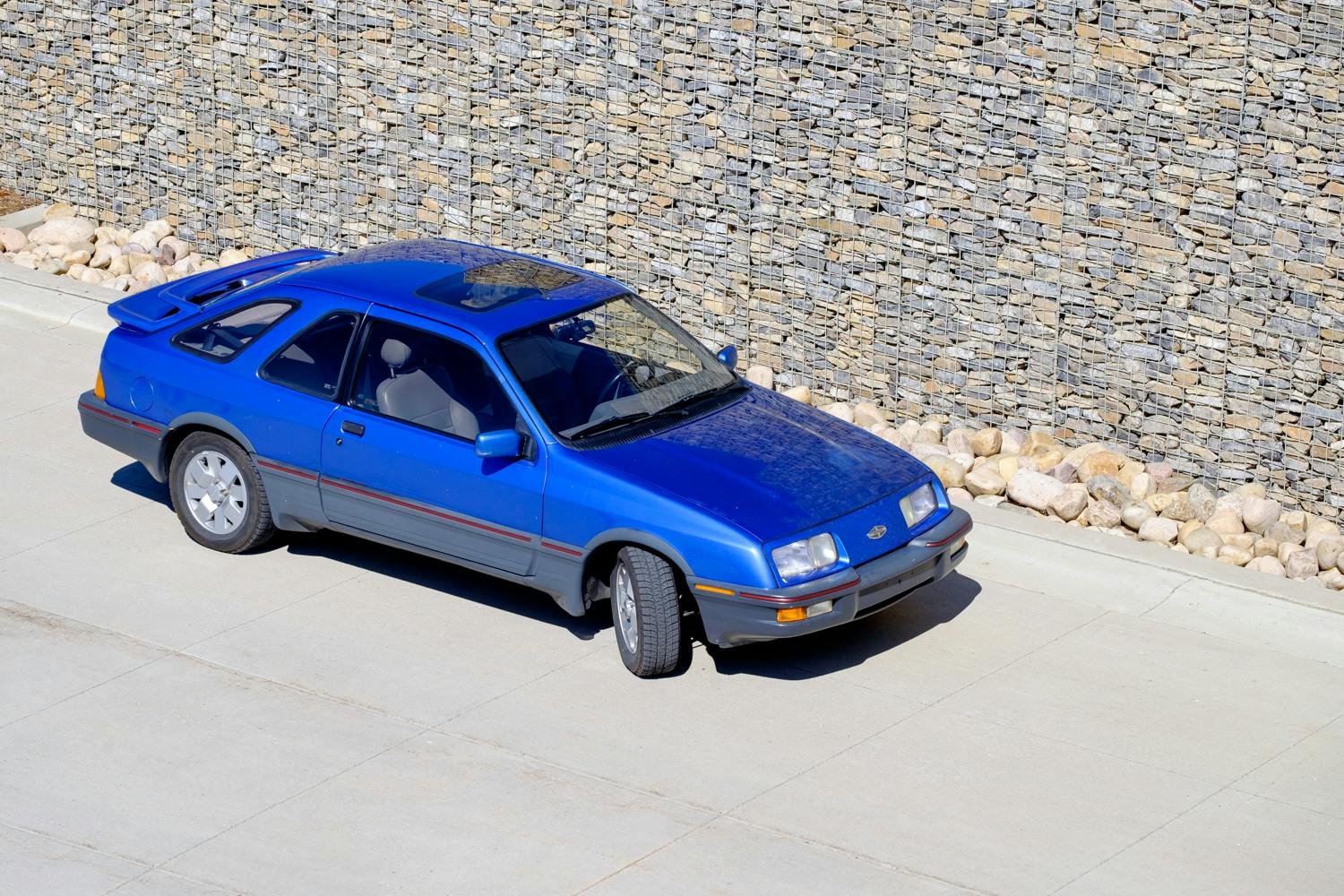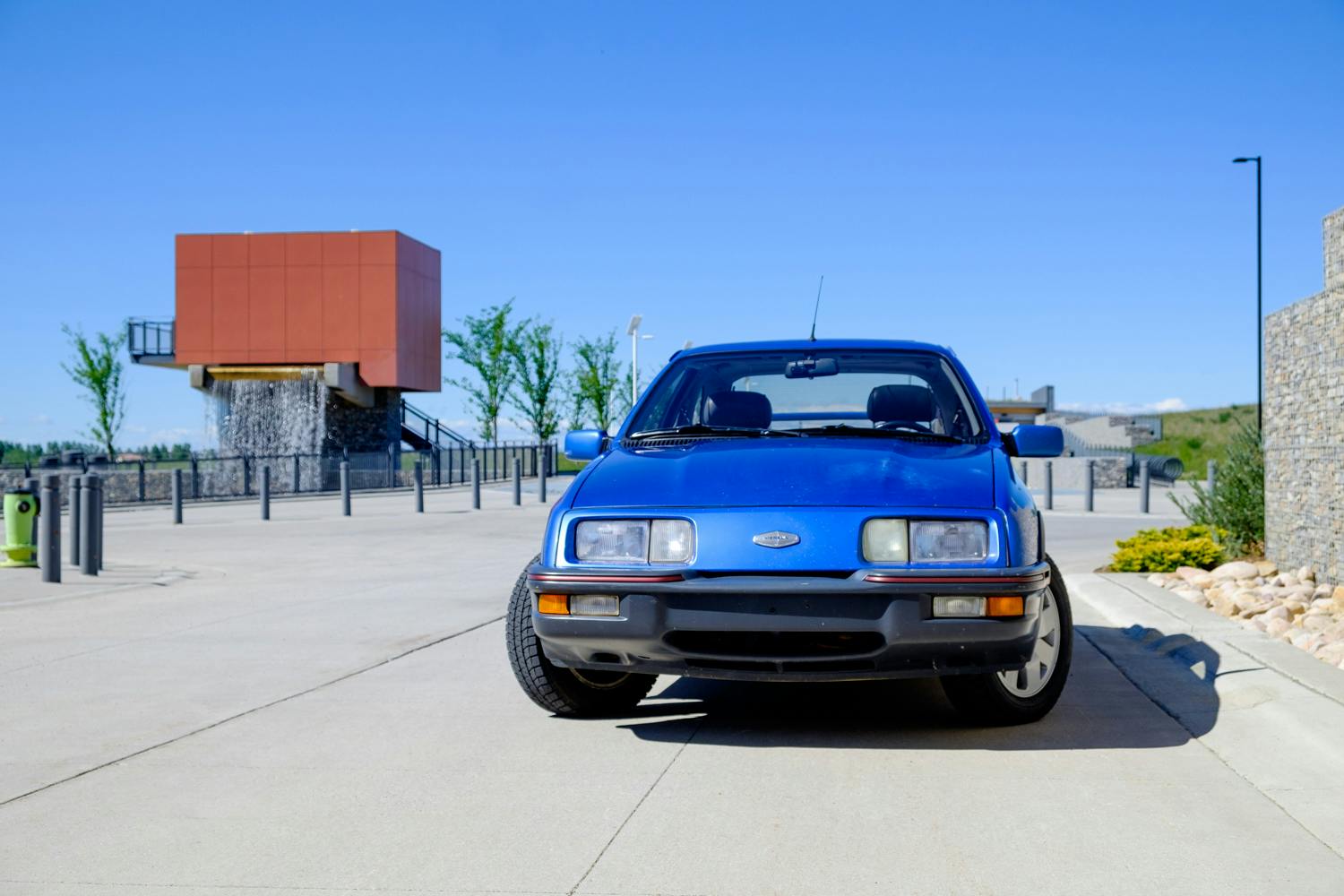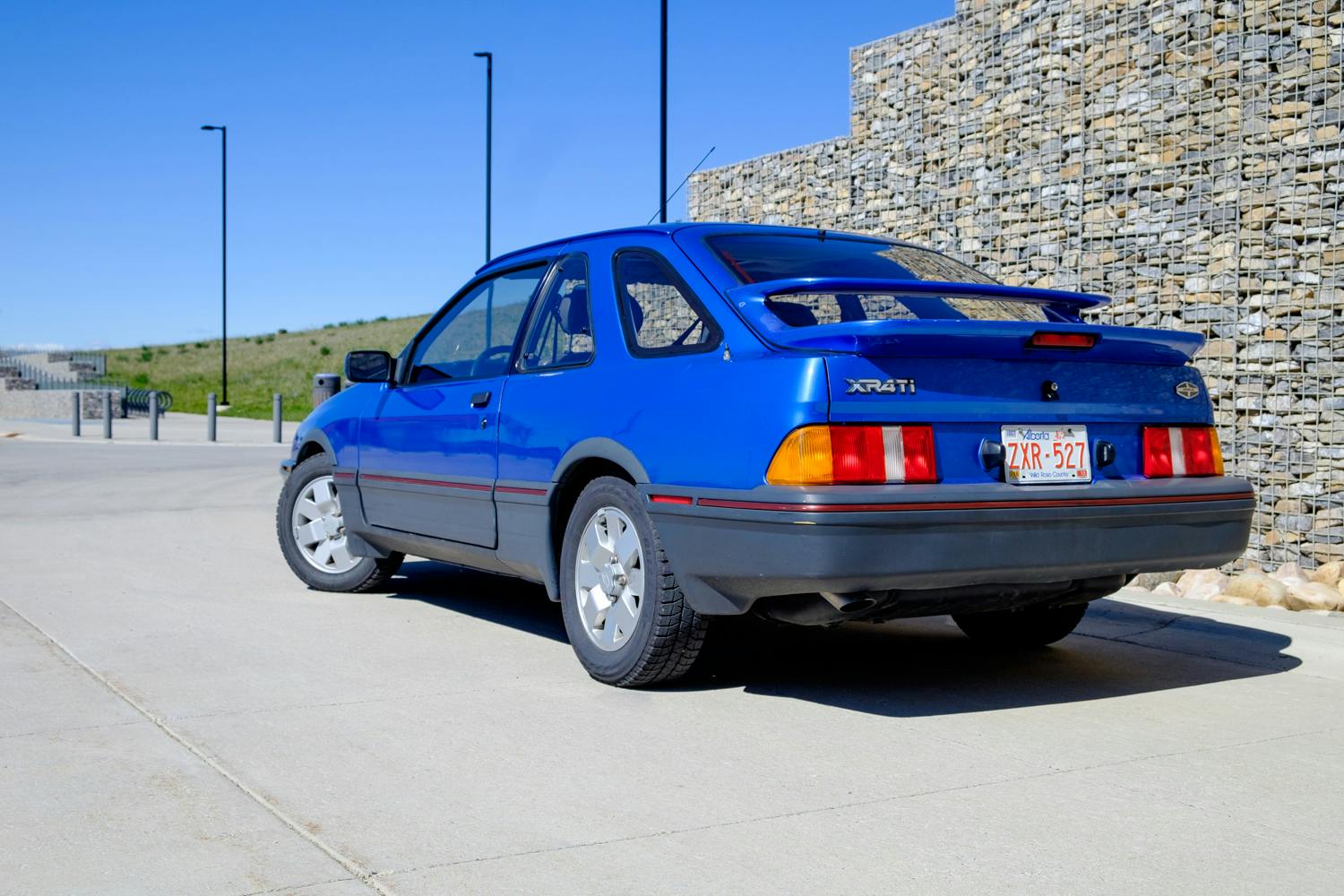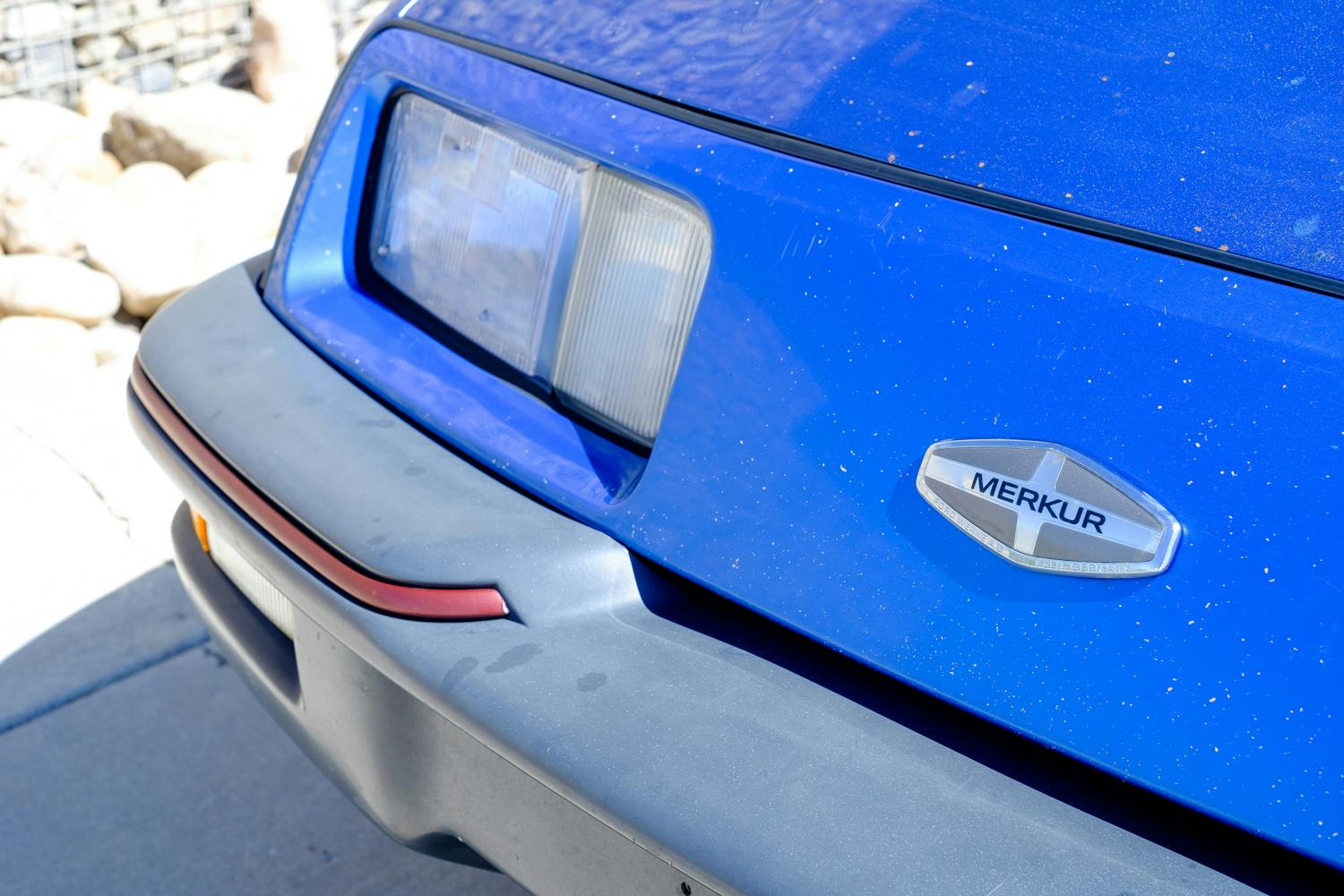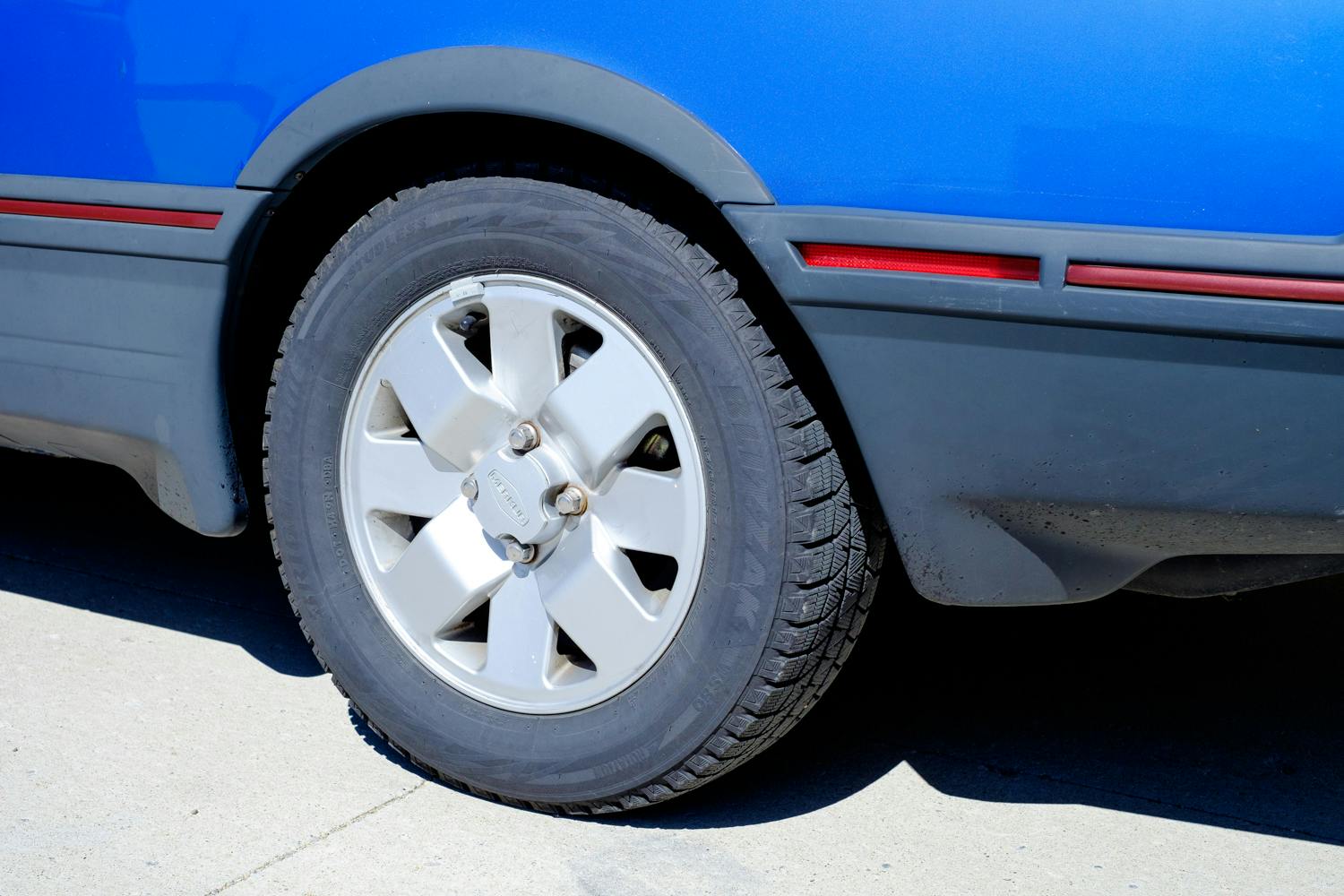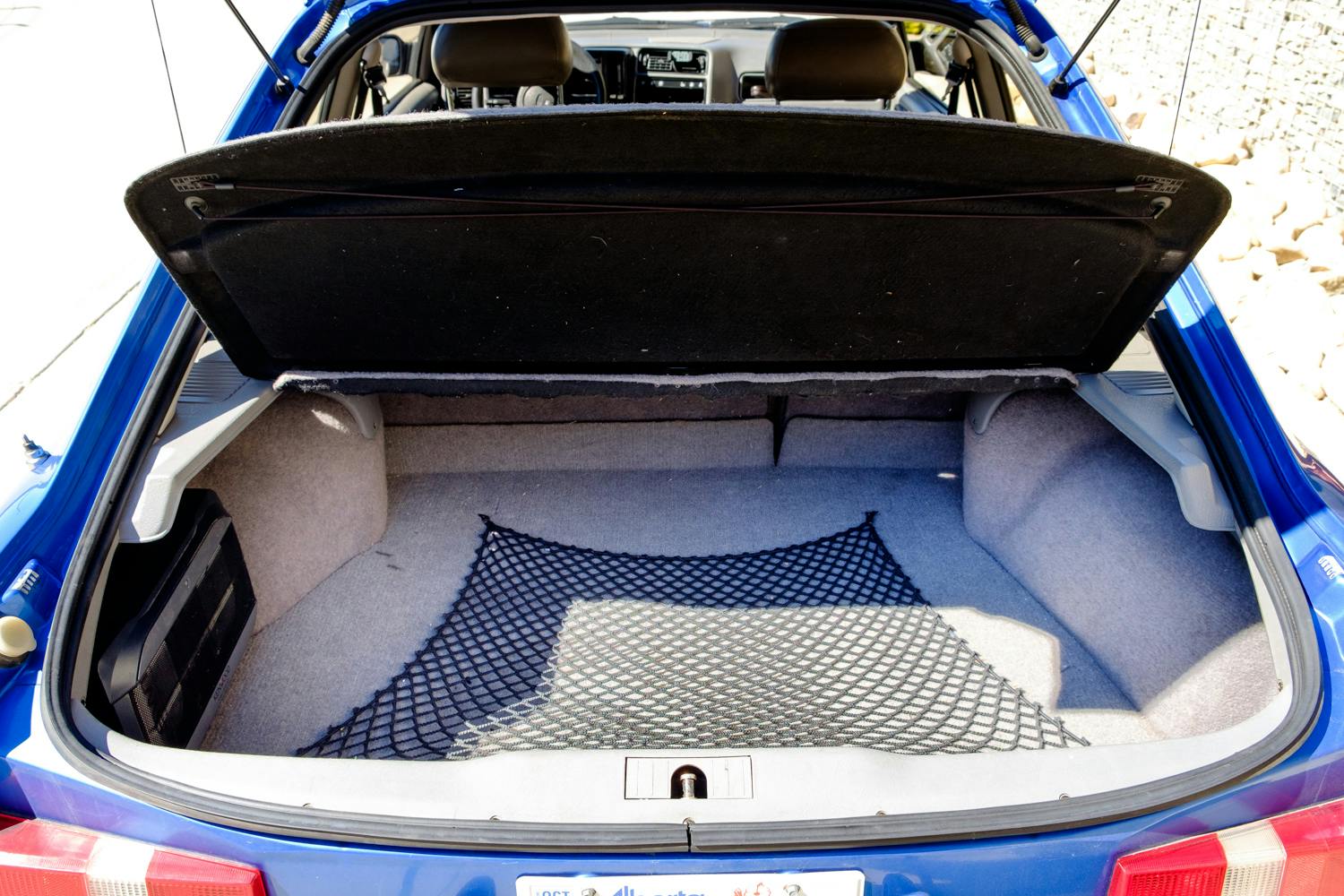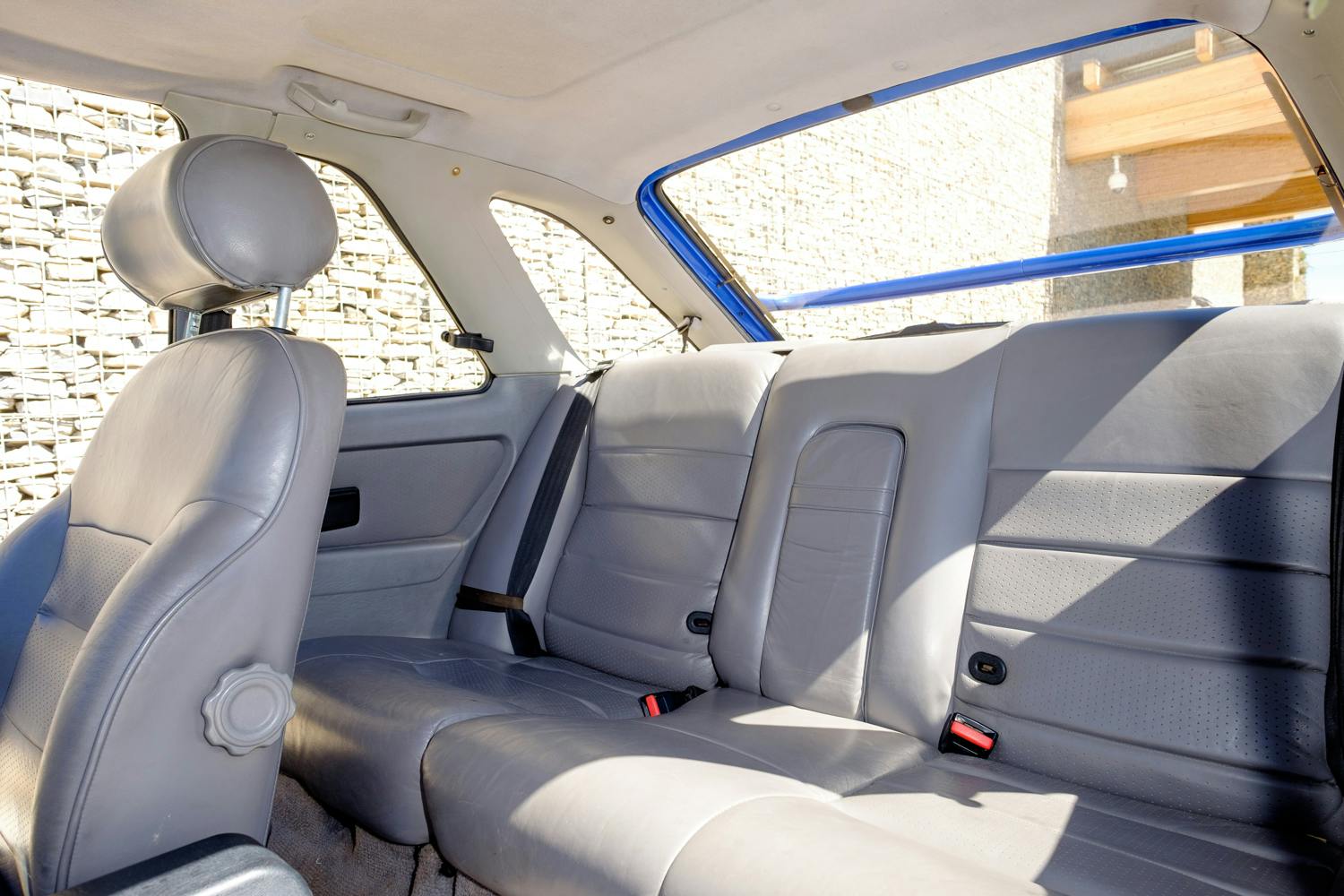$10K classic: The Merkur XR4Ti is an affordable ’80s treat
If you’ve got a Merkur XR4Ti on the brain, blame Bob Lutz. “Maximum Bob,” as he became known, is one of the guys who also gave us the Dodge Viper and the Chevy Volt. But back in the early 1980s, Lutz was president of Ford of Europe, and his new Sierra, introduced at the 1982 Frankfurt Motor Show, featured a radical aerodynamic shape and impressive driving dynamics. Lutz suggested offering the performance hatchback version, the XR4i, in the United States through a new dealer body that understood the car and its intended clientele: yuppies.
Ford CEO Donald Petersen spent $50M making the coupe legal for sale in America, but the new dealer-body concept was DOA. Instead, in a fit of marketing misfortune, the Merkur brand (German for Mercury and pronounced Mare-coor) was created, and the rear-wheel-drive two-door was placed in Lincoln-Mercury showrooms right alongside 18-foot-long Town Cars and Merc’s frumpy new Topaz. Ford had played this samba before with the German-built 1970–78 Mercury Capri.
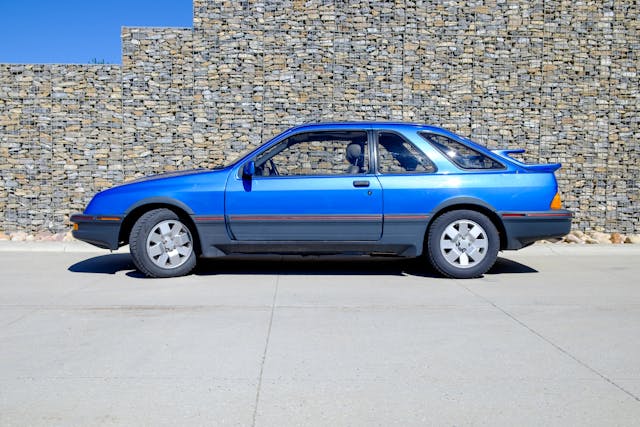
The car was constructed in Germany by Karmann, and meeting U.S. emissions and safety regulations added nearly 300 pounds and 850 new parts. Its independent rear suspension and signature bi-plane rear spoiler made the cut, but the Sierra’s 148-hp 2.8-liter Cologne V-6 was replaced by the Brazilian-built turbocharged four-cylinder from the 1983 Mustang Turbo GT and Thunderbird Turbo coupe.
Though the same cast-iron 2.3-liter had gained an intercooler in the 1984 SVO Mustang, it wasn’t intercooled in the Merkur. Ingesting 14 psi of boost, it was rated 175 horsepower at 5200 rpm and 195 lb-ft of torque at 3800 rpm with the five-speed manual. Equipped with the three-speed automatic, the engine was dialed back to 145 horsepower.
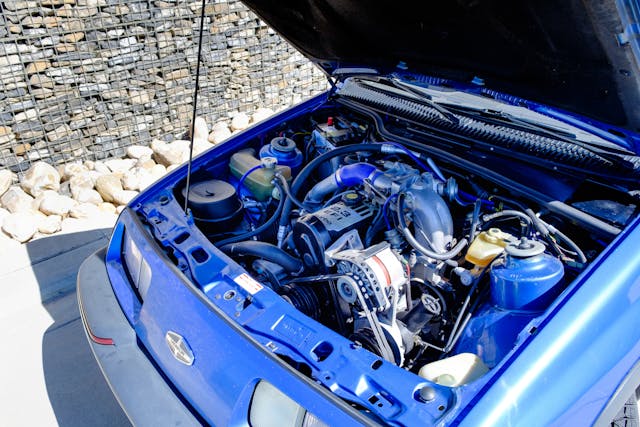
Ford also added hydraulic engine mounts to calm the four-banger’s shimmy and a T to the name to call out the turbo. Merkur XR4Ti doesn’t exactly roll off the tongue, but whatever, it was 1985. People thought New Coke was a good idea.
Though the XR4Ti retailed for a spendy $16,500, the magazines ate it up. Motor Trend’s September 1984 cover said the XR4Ti was “Lincoln-Mercury’s Antidote for the BMW Syndrome.” But despite the hype and its considerable performance, the XR4Ti was ultimately a flop. Ford hoped it would kick off a new brand of sophisticated European imports, but just 42,464 sold in four years. In 1989, $4000 cash incentives were needed to move the final 2870 cars.
For 1987, wheel size increased from 14 inches to 15 inches, and the antenna was integrated into the rear glass. A year later, Ford toned down the XR4Ti’s look. The duplex rear spoiler lost its second floor and the gray body cladding became body color. Inside, a 150-mph speedometer replaced the 85-mph unit.
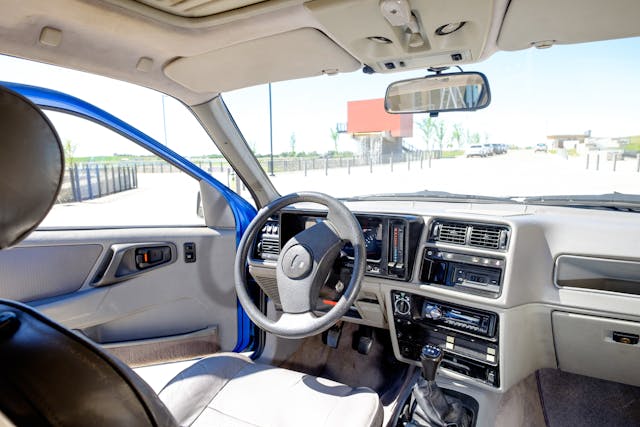
The XR4Ti has always had a following, and they’re only getting more popular. The Merkur Club of America is a hub of support, and parts are available from places like Merkur Parts Midwest. Cars with incomplete service histories can be troublesome, so ask for records. The engine’s timing belt needs to be changed every 60,000 miles, and underhood heat is a known problem, so check for dry, cracked hoses and other beat rubber parts.
Early models with the two-tiered spoiler and a stick are the most sought after, but the best one in the world can still be found for under $10,000. We’re pretty sure Bob Lutz does not own one.
1985–89 Merkur XR4Ti
ENGINE: 2.3-liter I-4, turbocharged
POWER: 175 hp @ 5200 rpm
TORQUE: 195 lb-ft @ 3800 rpm
WEIGHT: 2910 lb
0–60 MPH: 8 sec
TOP SPEED: 129 mph
PRICE WHEN NEW: $16,500
HAGERTY #3 VALUE: $2900–$3900

